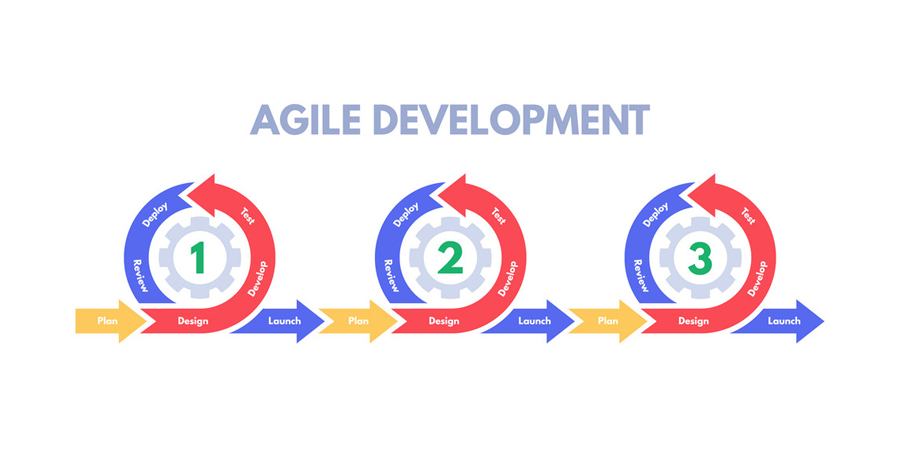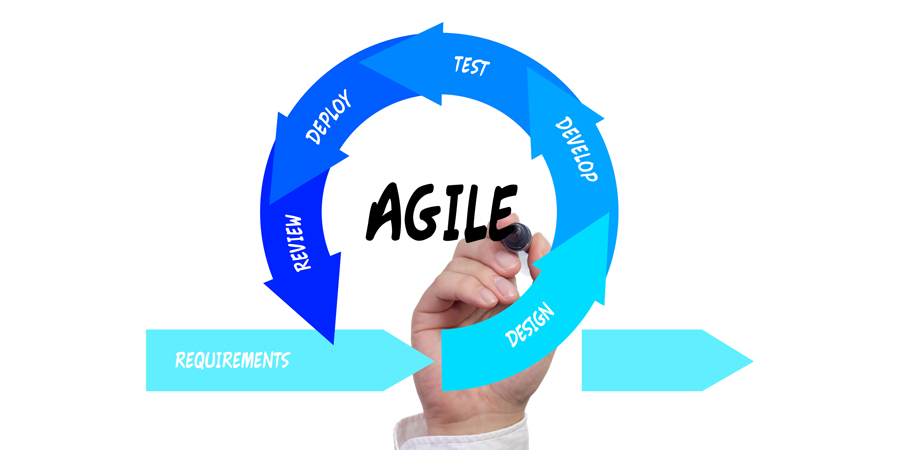Understanding The Agile Software Development Life Process
As software developers, it’s imperative to keep up with these changes. The Agile software development life cycle is a proven methodology to meet changing requirements and demands.
In this post, we will discuss the Agile methodology comprehensively. Read on to know about it and how it works.
What is Agile SDLC?
The Agile methodology is a software development methodology. It was created twenty years ago by a team of 17 developers who want to improve the waterfall methodology and other software development methods. These developers created the agile manifesto, which holds the four key values and twelve principles.
The Four Key Values Of Agile SDLC
- Individuals and interactions over processes and tools
- Deliver working software over comprehensive documentation
- Customer collaboration over contract negotiation
- Responding to change over following a plan
You can find the complete manifesto and signatories of the Agile movement here.
From its core working principles, the Agile methodology focusses on satisfying the end-user or customer needs through collaboration and delivering working software. Though only secondary, there are still development processes you should not overlook in Agile.
Due to its customer-centric approach, Agile enables development teams to may work on one or more projects simultaneously.
Iteration - The Core Process Of Agile Development Lifecycle
To comply with the end-user requirements during the development process, the Agile method involves a workflow process called iteration (called sprint in the scrum method).
The iteration process is the time spent by all team members, such as business stakeholders and developers, during software production.
At this stage, a fast-paced system development takes place with defined goals in mind.
Before we discuss the iterative approach, it’s best to understand the different lifecycle stages of the typical Agile workflow first.
We build custom software with modern solutions in mind for any business and sizes!
We build custom software with modern solutions in mind for any business and sizes!
What Are The Stages Of Agile Development?
A typical Agile software development life cycle has six stages, with iteration as its core. Below are the stages:
- #1: Conception
This is the starting phase of a new software project. Stakeholders and the software development team talk about the feasibility of the product or project. This stage is also often called the initiation stage.
- #2: Inception/Planning
The phase of the development where the team discusses all the project details. These include the budget, target users, timeframe, business opportunities, product risks, and milestones.
- #3: Iteration
In the Agile development lifecycle, this phase is where all the fast-paced work happens. Here, you may divide the work through segments called iterations, increments or sprints. Experts also call this the development stage.
- #4: Production
This stage involves the work deployment and product launch. At this point, the final software product is now ready. This includes the working product and support training materials or handover manuals. Experts also call this the “release stage”.
- #5: Retirement
This is the last phase of the Agile lifecycle in which the product is due for decommissioning due to a new version or an entirely different product with the same usage. This stage is also called the sunset stage.
Stages of the Agile Iteration Workflow
As mentioned earlier, the Agile software development life cycle is composed of work iterations (also called sprint in scrum). Every work iteration or sprint lasts for about two to four weeks, depending on the set time duration by the business stakeholders and the development team.
Since each iteration or sprint has a set time limit, the set scopes and design requirements need to be realistic.
Active feedback from users, customers, and business owners that are testing the product is also essential. This will help improve work quality by pointing out an error that needs to change or an area that needs improvement.
A typical iteration workflow has five stages: requirements, design, coding, deployment, and feedback.
Requirement Stage
To begin the first iteration (also called sprint in scrum), make sure you have all the requirements ready. Consider documenting the process for future reference, as well. You should also include the project’s clear objectives, useful features and support limitations. This will give the project a clear focus on what to achieve and also limit adding unnecessary features to the system design.
Succeeding iterations will be dependent on the requirements listed on the product backlog (or a sprint backlog in scrum). Product backlogs are lists made from the feedback stage of the previous iterations. Keep in mind that the first stage is often the most crucial one. Focus on every preliminary step you need to cover– from the developing ideas to project release and post-project results.
Design Stage
On initial design process, the software development team will layout the project groundwork. From there, team members can now collaborate to analyze each item. The team discussion should include planning out the best course of action, best framework, and the best tools to achieve the best quality. We recommend using diagrams and product mock-up during this stage.
Coding/Testing Stage
Once the team has determined the course of action in the design stage, they can now proceed to the coding/testing phase. To achieve optimal results, they will also conduct quality assurance testing. This is crucial, especially when you go along the release stage. Again, this requires proper documentation for future reference.
Deployment Stage
After coding and thorough checking, it is now time to implement the new design changes to the existing working software iteration. In some cases, users can also implement this through software updates.
Feedback Stage
After the system integration of the new software versions, users and stakeholders can now provide reviews or feedback. All feedback should be reviewed in the next iteration. Thus, starting another iteration workflow cycle.
We build custom software with modern solutions in mind for any business and sizes!
We build custom software with modern solutions in mind for any business and sizes!
How To Adapt Agile SDLC?
To adapt to the Agile software development life cycle, you need to make sure the software development process is aligned with the principles from the Agile process manifesto. To give you more ideas, you may refer to this guide questions:
- Is customer satisfaction my number one priority?
- Do my planning and work process welcome changes?
- Are my teams working in collaboration with the customers?
- Do I consistently deliver working software every iteration?
- Do my teams prefer to work collaboratively instead of following protocols?
- Do I encourage my team to use results-driven development?
- Do I support my team by creating a great working environment in the office?
- Are the members of the team motivated?
- Can you provide your team's needs to accomplish the project on time?
If the answer to all those questions is yes, then your software development and management is using the Agile method.
What Is The Difference between Agile To Other Software Development Methods?
When compared to other methods of development, Agile software development life cycle focuses on satisfying end-users and welcomes abrupt changes to the development cycle.
Conclusion
Using Agile SDLC is one of the best approach to keep up with the fast-changing dynamics. While the Agile SDLC is a proven strategy, it requires extensive experience and proper execution to achieve the best results. If you’re considering implementing the same model, it’s advisable to consult an expert.
Laneways Software & Digital is a trusted developer in Australia. With years of experience under our belt, we know what works for your organisation. Here, we focus on delivering the best results for our partners. For more information, don’t hesitate to contact us.
Partner with a software development team one that's passionate about creating success
With the broadness of the internet, and it’s continuous expansions across different platforms it is hard to leave a mark that lasts. With digital marketing services, easily make a mark of your own that pulls customers in from different parts of the internet.
Jerome Rault
Partner with a software development team one that's passionate about creating success
With the broadness of the internet, and it’s continuous expansions across different platforms it is hard to leave a mark that lasts. With digital marketing services, easily make a mark of your own that pulls customers in from different parts of the internet.


